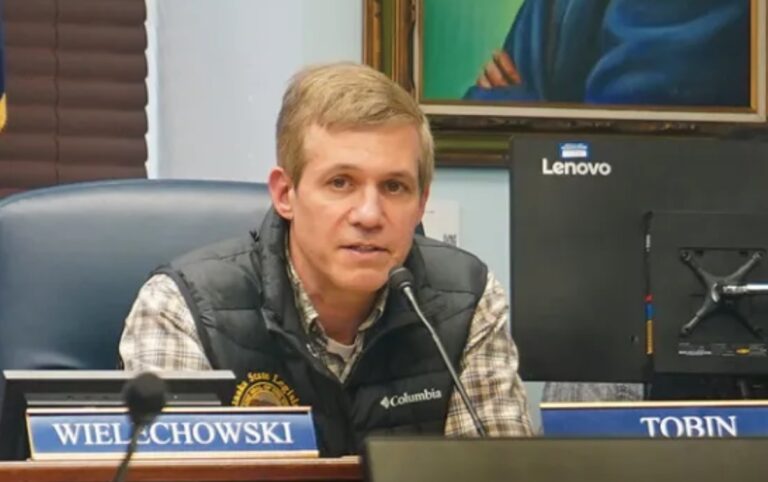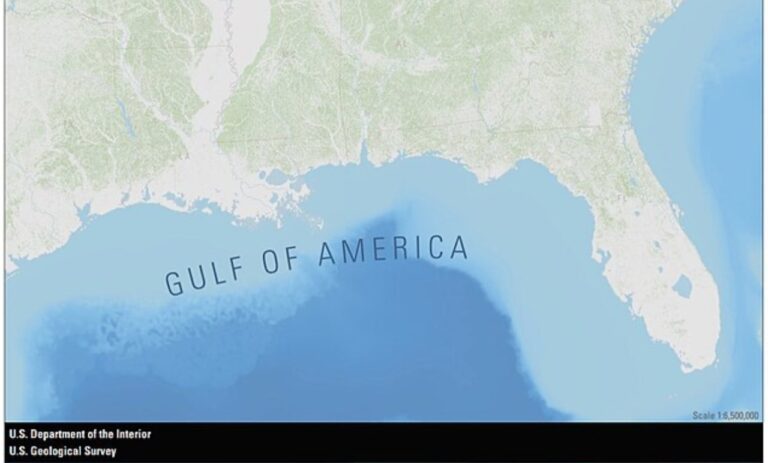By MICHAEL TAVOLIERO
The Department of Governmental Efficiency (DOGE) initiative is a strategic effort to modernize federal technology, streamline operations, and drive innovation across government agencies to enhance service delivery and efficiency.
What sets DOGE apart is its emphasis on accountability as the foundation for meaningful government reform. As the first initiative of its kind, it aims to transform federal operations by prioritizing effectiveness, transparency, and modernization.
Alaska’s education system is in crisis, a glaring example of government failure driven by bureaucratic inefficiencies, misplaced priorities and the lack of accountability. While some leaders strive for reform, their efforts are akin to patching a sinking ship with duct. Temporary fixes fail to address the deep, systemic flaws undermining student success.
In 2022, the Alaska Reads Act was signed into law, targeting early literacy among children from kindergarten through third grade. The act introduced initiatives like the Comprehensive Reading Intervention Program and the School Improvement Reading Program, which have already shown promising results. For instance, by the end of the 2024 school year, the percentage of students meeting early literacy benchmarks increased from 41% to 57% as reported by DEED.
Gov. Mike Dunleavy has also introduced comprehensive education reform legislation aimed at strengthening student achievement, expanding school choice, and improving teacher support. His proposals focus on increasing funding accountability, enhancing public school options, and ensuring students graduate prepared for success.
In January, he advanced legislation to expand public charter schools and allow students to attend any public school in the state, making it easier for families to access high-quality education. These initiatives reflect a commitment to meaningful reform rather than surface-level fixes, addressing long-standing challenges in Alaska’s education system.
Despite these efforts, significant challenges remain. The call for increased public education funding in Alaska’s capital has become a repetitive cycle, echoing without addressing fundamental issues. Public union leaders and school officials continue to push for a higher Base Student Allocation, yet this pattern of increasing spending persists without clear accountability or measurable improvements in student outcomes.
Increasing funding without accompanying reforms will not yield the desired improvements in student outcomes as the history of education spending has demonstrated through the decades and only continue to feed the selfishness of the public education union’s hunger.
Title 14, which establishes the Alaska school system, reflects a strong legislative focus on protecting student rights to education over those of teachers and administrators, as it should. Despite this emphasis, Alaska’s public education system ranks among the lowest in student performance while maintaining some of the highest costs per student in the nation. Alaska is far from competitive.
This is attributed to several key factors.
- The Alaska Legislature and the Alaska Deep State have a spending problem.
Alaska’s education spending reflects high administrative costs at both the Department of Education and Early Development and individual school districts. A significant portion of funding is allocated to bureaucracy rather than direct classroom instruction, covering administrative salaries, regulatory compliance, and program management.
With this resource misallocation, public funds are often spent on non-instructional areas, such as infrastructure, transportation, and support services, instead of academic improvement.
- Alaska’s education system and school districts have traditionally prioritized compliance over student outcomes, creating a heavy regulatory burden focused on meeting federal and state mandates rather than directly improving achievement. Policies emphasize equal access over academic excellence lower standards to ensure the inclusive rather than driving higher performance.
- Despite legislative support, teachers complain about facing low morale, heavy workloads, and insufficient professional development, which furthers the claim of these impacting instruction quality. Alaska, like many other states, claims it is experiencing a significant shortage of teachers. ONFOCUS in an article by David Keech, January 24, 2024, disclosed that Alaska is 10th among states with the highest ratios, indicating a substantial demand for more educators with a student-to-teacher ratio of approximately 19.08 students per teacher.
This is coupled with the major concern that the institutional lack of accountability for administrators is missing. While administrators have decision-making flexibility, there is limited accountability for poor outcomes.
- Military and transient students, covered under the Interstate Compact, which is an agreement among U.S. states designed to ease educational transitions for military-connected students who frequently move due to parental deployments or relocations, experience frequent educational disruptions.
While student success is strongly tied to parental engagement, legislation often overlooks this factor. Additionally, non-academic challenges, such as the growing demand for mental health services, can shift focus away from core educational performance, leaving gaps in both academic support and overall student well-being.
- The one-size-fits-all standardized testing and curriculum approach does not address the diverse needs of students.
As one example, DEED’s September, 2024, update to the Public School Funding Overview indicated that Alaska’s education funding formula, traditional academic programs receive a 20% funding increase through the Special Needs Factor (1.20), while vocational and technical education programs receive a 1.5% increase via the Career and Technical Education Factor (1.015).
This indicates that academic programs are allocated approximately 13 times more additional funding than vocational programs. Many states spend heavily on academic-based programs but underfund vocational and technical education. Alaska appears to be at the top of this class.
- The combination of teacher unions and tenure policies creates significant barriers to removing underperforming educators, as due process protections and lengthy evaluation procedures often delay or prevent dismissal. This can lead to inefficiencies in the education system and excessive costs for the tax payer, where struggling teachers remain in classrooms despite consistently poor student outcomes.
- Despite significant resource allocation, low student engagement persists due to uninspiring curricula and outdated teaching methods that fail to connect with modern learners. Without interactive, relevant, and student-centered approaches, many students struggle to find motivation, leading to disengagement and lower academic performance.
While spending is higher in places like Alaska and New York, funding inefficiencies, administrative costs, and socioeconomic disparities can dilute the impact on student achievement. More spending doesn’t always translate into better educational quality, if resources aren’t efficiently allocated to classroom instruction and student support.
- Rural states like Alaska face obstacles in education due to geographic isolation and limited resources, while Alaska’s urban districts claim to grapple with overcrowding and socioeconomic challenges. However, advancements in virtual learning and the proven success of schools like Mt. Edgecumbe in the past show that strategic investments and innovative approaches can bridge these gaps, ensuring quality education in both rural and urban environments.
The primary purpose of Alaska public education is to provide universal access to quality learning opportunities, ensuring that all students, regardless of background, acquire the knowledge, skills, and critical thinking abilities necessary to become informed citizens, productive workers, and lifelong learners. These students are the future of our communities, states and nation.
The high percentage of legislative focus on student rights through Title 14 has unfortunately not translated to high performance because the execution of policies, funding allocations, and accountability measures continue to miss the mark and the true purpose of public education. Simply increasing spending per student does not guarantee better results if systemic inefficiencies, lack of performance-driven policies, and socioeconomic barriers persist.
Michael Tavoliero writes for Must Read Alaska.









